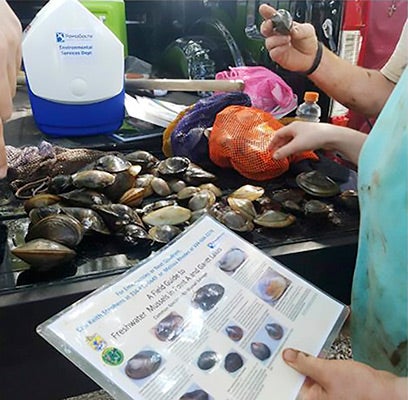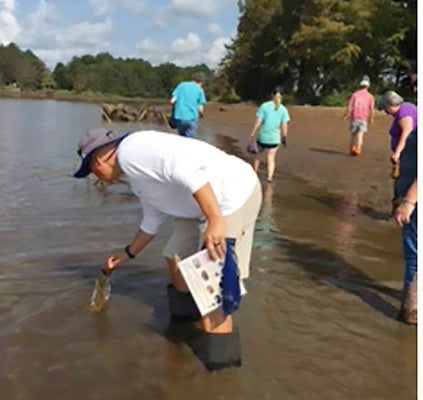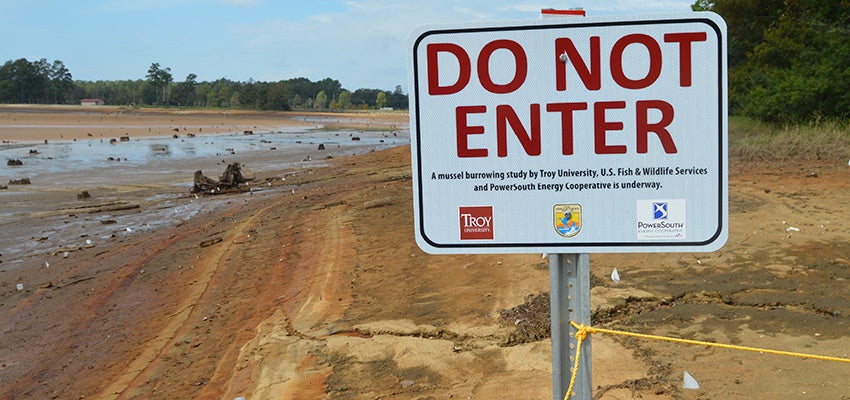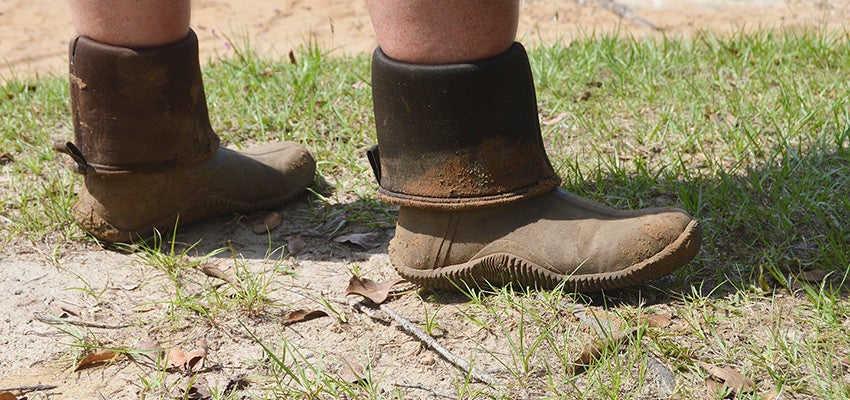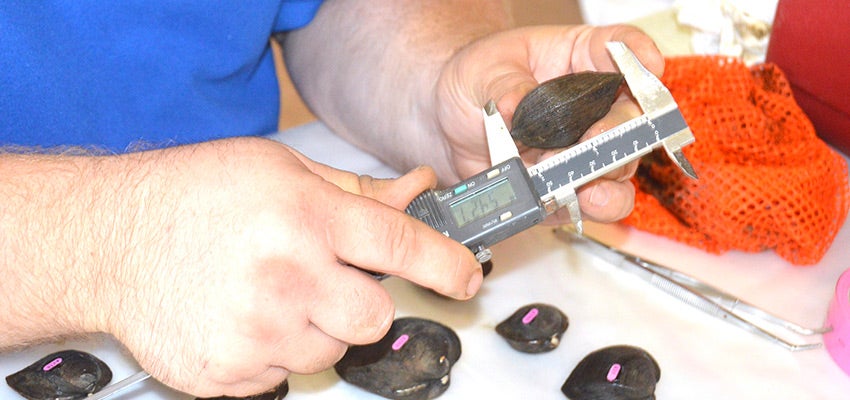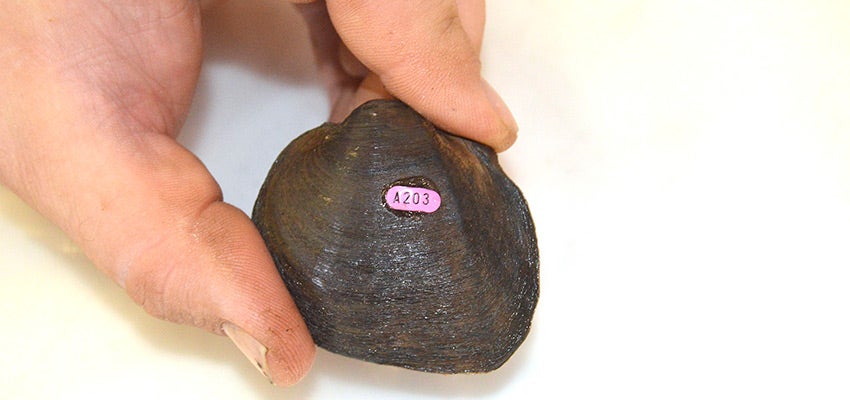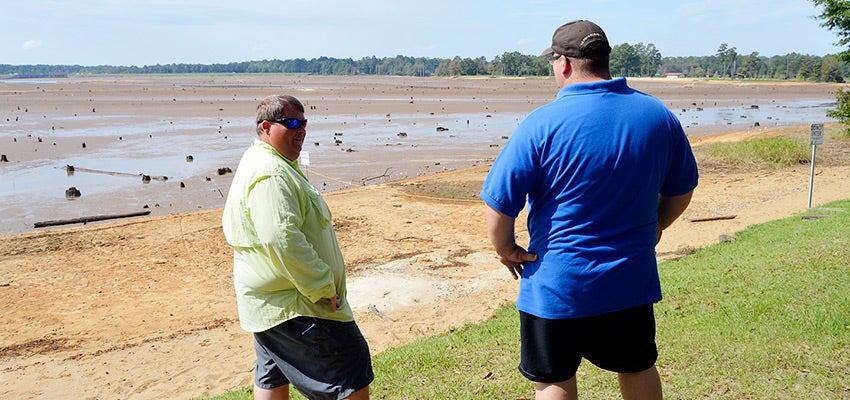MASSIVE EFFORT
Published 2:24 am Tuesday, September 26, 2017
Representatives of multiple federal agencies, state agencies, a fellow utility, as well as students from three colleges and a high school joined employees of PowerSouth last week to relocate federally threatened freshwater mussels from Point A to Gantt Lake.
It was a muddy process, PowerSouth environmental science supervisor Wes Robertson said.
The massive effort was part of an Endangered Species Act consultation with U.S. Fish and Wildlife Service conducted in conjunction with PowerSouth’s drawdown of Point A for repairs to its hydroelectric dam. Troy University is conducting a study under this consultation, which PowerSouth is funding. Robertson explained that plans for moving the mussels and the companion study have been in the works since 2014.
“We made a concentrated effort to locate the narrow pigtoe (Fusconaia escambia) mussel,” Andy Ford, a U.S. Fish and Wildlife biologist, said, adding that the group also identified and relocated two species of concern in Alabama – the Cypress floater (Andonta hartfieldorum) and Gulf Lilliput (Toxolasma sp.)
Prior to the drawdown and relocation effort, the environmental scientists identified areas to search, based on the depth of the water. The areas with shallower water – zero to 8 feet deep – are home to most of the species, although areas that normally have up to 13-feet of water were included in the study.
So far, the findings have validated what scientists suspected, Ford said, with most of the mussels found in the normally-shallow areas of the lake, where the sandy bottom is more firm.
Participants used field guides and maps prepared by the U.S. Fish and Wildlife to locate the areas where the mussels were most likely to be found, and to help identify the mussels that are actually endangered. As part of the study that will take place in the 14-week drawdown period, the locations of those mussels were charted to help determine the conditions in which the species thrive.
Robertson said PowerSouth called on its environmental department as well as employees from other departments for the massive project. Other workers and volunteers were from the U.S. Fish and Wildlife, Army Corps of Engineers, Alabama Department of Environmental Management, Alabama Department of Conservation and National Resources, Geological Survey of Alabama, Alabama Forestry Association, Auburn University Extension Service, Alabama Power, Auburn University, Troy University, LBW Community College, and Opp High School.
Scientists, students and PowerSouth employees worked in teams, for safety reasons, Robertson said. In some areas, the wrong step could mean one would sink deeply in the mud, and there also is potential danger from objects dropped in the lake, from broken glass to fishing lures.
And that’s why PowerSouth is encouraging people to stay out of the lakebed during the drawdown.
“The lake is closed to public access,” Robertson said. “Not only is it potentially dangerous for people to be here, but they also could negatively affect an important study.”
Ford said the drawdown event is similar to the effects of drought in creeks and streams, and many reservoir systems do drawdowns. The study’s results could be important to many.
“We hope to publish the results in a peer-reviewed journal,” Ford said.
The test will be whether or not the mussels that remain in the Point A area will burrow enough to survive. Each mussel that was moved to Gantt was tagged and measured. When a similar drawdown is held of Gantt Lake in the future, the mussels will again be identified, measured, and moved back to Point A, where they will be placed it the areas the current study show mussels thrive.
When the mussels were located, they were placed in coolers on ice to lower the stress to the mussels’ systems.
The timing of the drawdown and dam repairs was adjusted to coincide with environmental conditions more favorable for the species, Robertson said.
Ford said the agencies that participated often work together.
“If you wanted to identify fish species in a stream drainage, it could take one team an entire summer,” he said. “But when 30 biologists blitz the area, it can be done in a week.”
Mussels are still being located this week, but the count on Friday included 210 Narrow pigtoes (the federally threatened species); 727 Gulf Lilliput (Alabama species of concern); and 4,535 Cypress floaters (also an Alabama species of concern).


